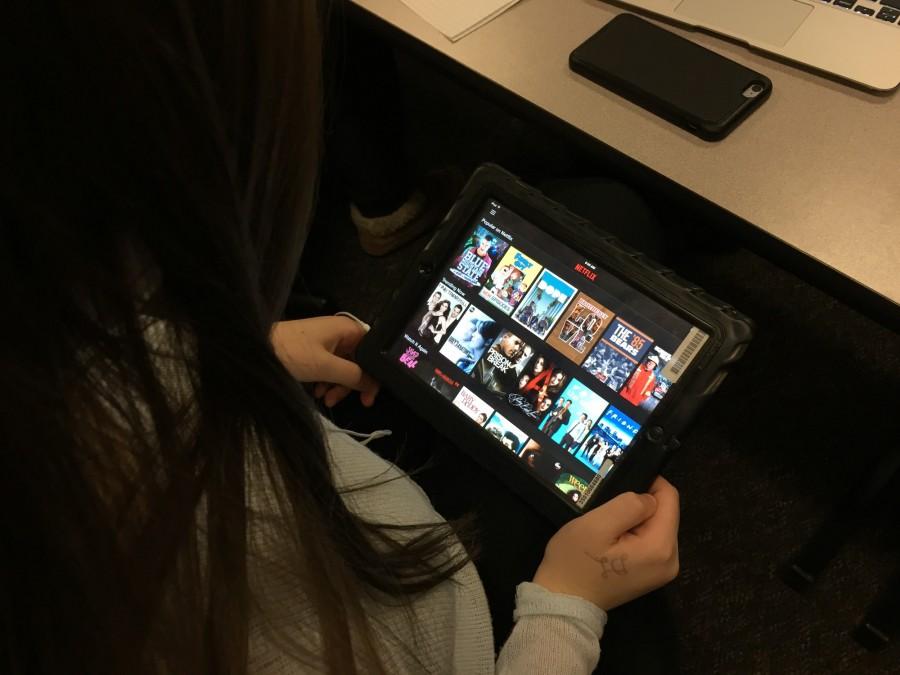Is technology making us more alone?
With internet so easy to access and phones so approachable within the reach of our pockets, our generation revolves around technology. (Photo: Katrina Sanchez)
March 8, 2016
Everywhere we look, people are on their phones with their eyes locked onto the screens of their devices. With internet so easy to access and phones so approachable within the reach of our pockets, our generation revolves around technology: whether it is sitting in the cafeteria or hanging out with friends, we are always on our phones. With more technological advances, what we do not realize is how disconnected we become as we become more connected than ever.
Surrounded by people everywhere we go, checking social media and text message notifications becomes our first instinct. In every class are students on their iPhones, allowing technology to distract them from their education. Instead of getting together and hanging out with friends, our immediate thought is to pull out our phones.
“We’re spending more time together apart,” sophomore Janell Isola said. “It’s so easy to send someone a text message and communicate technologically than it is to have a conversation face to face.”
Furthermore, as technology allows us to connect with people anywhere at anytime, it also hinders us from real human interaction, ultimately resulting in lonesomeness. In Forbes’s article “Text or Talk: Is Technology Making You Lonely?” Margie Warrel stated: “Surprisingly, those who report feeling most alone, are those you’d expect it from least: young people under 35 who are the most prolific social networkers of all” (Warrell 1). Evidently, active social media users are those who feel the loneliest.
Moreover, in some cases, technology may also lead to cyberbullying, which can bring teens to depression and sometimes suicide. According to the Cyberbullying Research Center, Justin W. Patchin stated: “Approximately 34% of the students in our sample report experiencing cyberbullying in their lifetimes. When asked about specific types of cyberbullying in the previous 30 days, mean or hurtful comments (12.8%) and rumors spread (19.4%) online continue to be among the most commonly-cited. Twenty-one percent of the sample reported being cyberbullied in one or more of the nine specific types reported, two or more times over the course of the previous 30 days” (Patchin 1). Clearly, though technology allows us to contact others easily, hiding behind a screen makes it easy to hurt others while isolating ourselves.
All in all, the vast advances in technology provide us with the ability to connect more easily with others, yet as technology progresses, we become a detached society, and the only way to prevent this is to know how to limit ourselves; by learning when to say “no” and turning off our screens, we do not have to be a generation of isolation.
Works Cited
Patchin, Justin W. “2015 Cyberbullying Data.” Cyberbullying. Cyberbullying Research Center. 01 May 2015. Web. 02 March 2016.
Warrell, Margie. “Text or Talk: Is Technology Making You Lonely?” Forbes. Forbes. 24 May 2012. Web. 02 March 2016.



